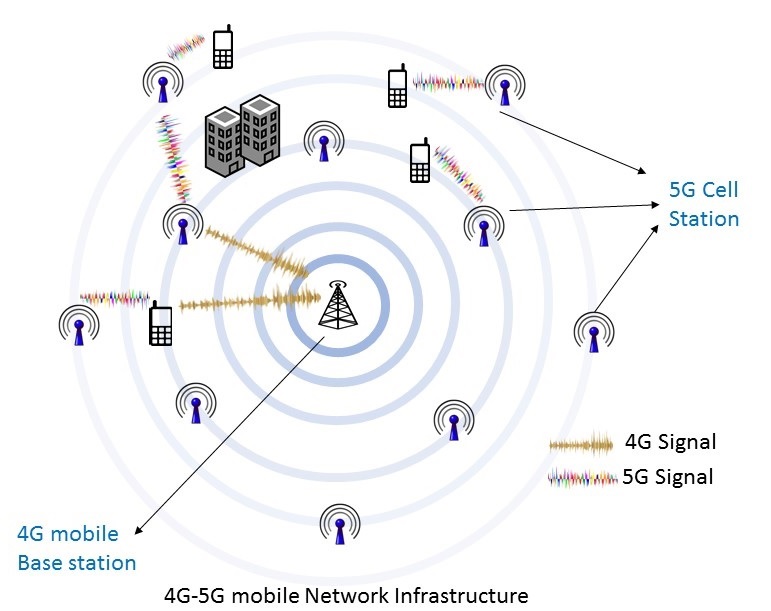Welcome to the future of connectivity! 5G networks are here, and they’re set to revolutionize the way we do business. With lightning-fast speeds, improved reliability, and increased capacity, businesses can expect a whole new level of performance from their network infrastructure. But like any technological advancement, there are pros and cons to consider before taking the plunge into this brave new world. In this blog post, we’ll explore what 5G networks have to offer for businesses both big and small, as well as some potential pitfalls you should watch out for along the way. So buckle up and get ready to navigate the exciting landscape of implementing 5G technology in your business!
What is 5G?
As mobile data consumption continues to increase at an unprecedented rate, the demand for faster and more reliable wireless networks has never been greater. The next generation of wireless technology, 5G, is designed to meet this demand by offering significantly faster speeds and lower latency than its predecessors. While the potential benefits of 5G are significant, there are also a number of challenges that need to be addressed before it can be widely adopted. In this article, we’ll explore both the promises and the challenges of 5G from a business perspective.
One of the most anticipated benefits of 5G is its speed. Current 4G networks are capable of theoretical peak speeds of around 1 gigabit per second (Gbps). In real-world conditions, however, average speeds are closer to around 10-20Mbps. 5G, on the other hand, is designed to offer theoretical peak speeds of up to 20Gbps. This means that 5G could potentially be up to 200 times faster than 4G. While these speeds may not be achievable in practice initially, they provide a clear indication of the potential of 5G.
Another key benefit of 5G is its low latency. Latency is the amount of time it takes for a packet of data to travel from one point to another. It’s measured in milliseconds (ms), and lower latency means a more responsive connection. Current 4G networks have an average latency of around 50ms. 5G is designed to offer latencies as low as 1ms

Pros and Cons of 5G
The jury is still out on whether 5G is a true game-changer or not. But there’s no doubt that it promises a lot, from faster download speeds to lower latency and more capacity. So what are the pros and cons of 5G?
PROS:
1. Speed: 5G is much faster than 4G, with average speeds expected to be around 1 gigabit per second (Gbps). That’s about 20 times faster than 4G LTE. So you can download a full HD movie in seconds, rather than minutes.
2. Capacity: 5G will have significantly more capacity than 4G, meaning that networks won’t get congested as easily. This is thanks to the use of higher frequency bands, which offer more data-carrying capacity.
3. Latency:Latency is the time it takes for a packet of data to travel from one point to another. 5G has the potential to offer extremely low latency, down to around 1 millisecond (ms). That’s around 10 times lower than current 4G networks, and would make things like gaming and virtual reality much smoother experiences.
4. Reliability: 5G will be more reliable than 4G because of the way it uses multiplexing (sending multiple signals over a single channel) and beamforming (directing signals at specific devices). This means that there will be fewer dropped connections and better coverage in buildings and other areas with poor reception.
The Business Case for Implementing 5G Networks
The business case for implementing 5G networks is compelling. The potential for increased speed, capacity, and lower latency offers a number of advantages for businesses. With 5G, businesses can expect to see:
-Increased speeds: 5G promises speeds up to 100 times faster than 4G. This means that businesses will be able to move large amounts of data much quicker, leading to increased efficiency and productivity.
-Increased capacity: 5G networks will have the ability to support a massive increase in the number of devices and connections. This is ideal for businesses that are looking to expand their operations or offer new services.
-Lower latency: 5G networks will have latencies as low as 1 millisecond. This is critical for businesses that rely on real-time data, such as financial trading firms or online gaming companies.
The benefits of 5G will be felt across all industries, but there are some sectors that are expected to see particularly dramatic results. Some of the most promising applications for 5G include:
-Autonomous vehicles: 5G’s low latency and high bandwidth will be essential for self-driving cars. These vehicles will need to be able to communicate with each other and with infrastructure in real time in order to avoid accidents.
-IoT: The IoT is expected to explode in the next few years, with billions of devices connected to the internet. 5G will be critical for managing this immensenetwork of

The Technical Challenges of Implementing 5G Networks
The next generation of cellular technology, 5G, is set to provide a major step forward in mobile data speeds and capacity. But delivering on the promise of 5G will require significant improvements in network infrastructure. The challenges posed by implementing 5G networks are both technical and financial.
From a technical perspective, 5G networks will need to be able to handle much higher data rates than current 4G networks. They will also need to be more energy efficient and have lower latency (the time it takes for a packet of data to travel from one point to another). Meeting these challenges will require advances in a number of areas, including antenna technology, wireless circuit design, and software architecture.
The high costs associated with building out 5G infrastructure are another major challenge facing telecom companies. In addition to the cost of new equipment, deploying 5G networks will require a denser network of base stations than 4G networks. This means that many more cell sites will need to be built or upgraded to support 5G service. And because 5G services are likely to be used mostly in urban areas, the build-out costs could be particularly high in densely populated cities.

The Regulatory Landscape of Implementing 5G Networks
The deployment of 5G networks is a complex undertaking, and there are a number of regulatory hurdles that must be overcome in order to make the technology a reality. In the United States, the FCC has been working to clear the way for 5G deployments, and has taken several steps to streamline the process.
One major issue that has been addressed is the need for more spectrum. The FCC has made a large amount of spectrum available for 5G services, and is working to make more available in the future. This will help to ensure that there is enough capacity for 5G networks to meet the demands of users.
Another issue that has been addressed is the need for new infrastructure. The FCC has proposed changes to its rules that would make it easier for providers to deploy small cell networks, which are necessary for 5G speeds and capacity. These changes are still being debated, but if they are enacted, they would significantly speed up the rollout of 5G networks.
There are other issues that will need to be addressed in order for 5G networks to be deployed successfully. But with the right regulatory framework in place,5G can become a reality sooner rather than later.

Conclusion
Implementing 5G networks comes with a wide range of opportunities as well as challenges. But when done right, it can open up a world of possibilities for businesses and organizations. By carefully weighing the pros and cons, you can determine if 5G is right for your business or organization. With the right considerations in mind and an understanding of what’s ahead, you will be able to navigate the business landscape of implementing 5G networks with confidence.







